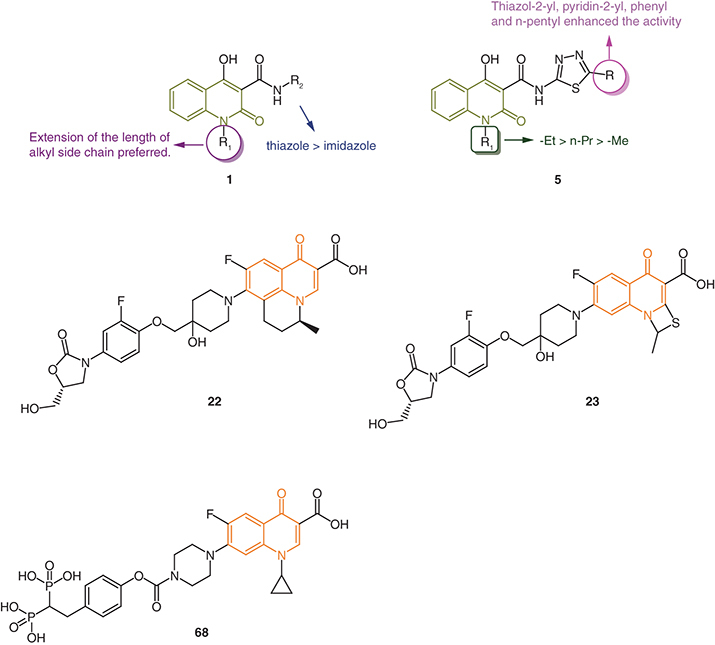Abstract
Quinolone derivatives, represented by fluoroquinolones, have emerged as the most commonly prescribed antibacterials for the treatment of various bacterial infections. In particular, the combination of a quinolone moiety with other antibacterial pharmacophores has the potential to act on different drug targets, which in turn, overcome drug resistance. Accordingly, quinolone hybrids are useful prototypes for fighting drug-resistant pathogens. The purpose of the present review is to provide an emphasis on the current scenario of quinolone hybrids with potential antibacterial activity against drug-resistant pathogens, covering articles published in the past 10 years. The structure–activity relationships, various aspects of rational design and mechanisms of action are also discussed to facilitate further rational development of more effective candidates.
Graphical abstract

The present review summarizes the current innovations in quinolone hybrids with potential activity against drug-resistant bacteria and discusses various aspects of structure–activity relationships.
Financial & competing interests disclosure
The authors have no relevant affiliations or financial involvement with any organization or entity with a financial interest in or financial conflict with the subject matter or materials discussed in the manuscript. This includes employment, consultancies, honoraria, stock ownership or options, expert testimony, grants or patents received or pending, or royalties.
No writing assistance was utilized in the production of this manuscript.
